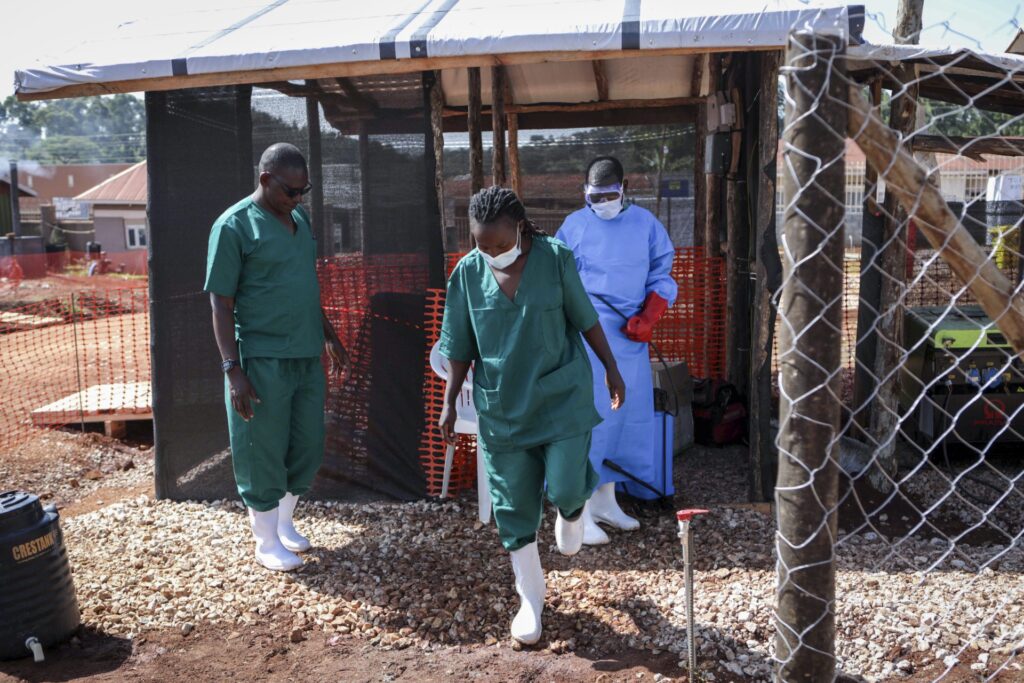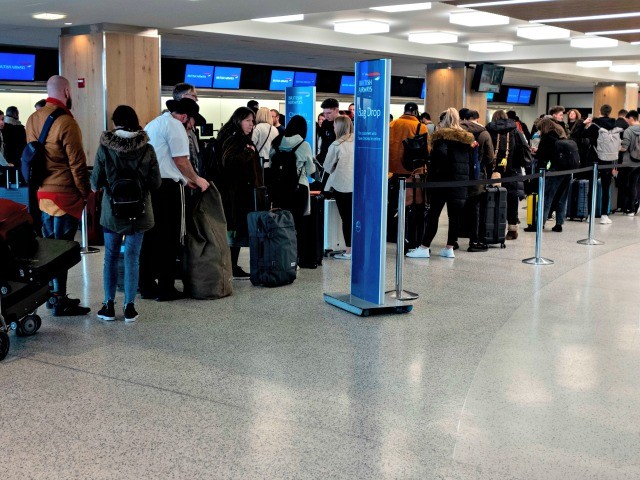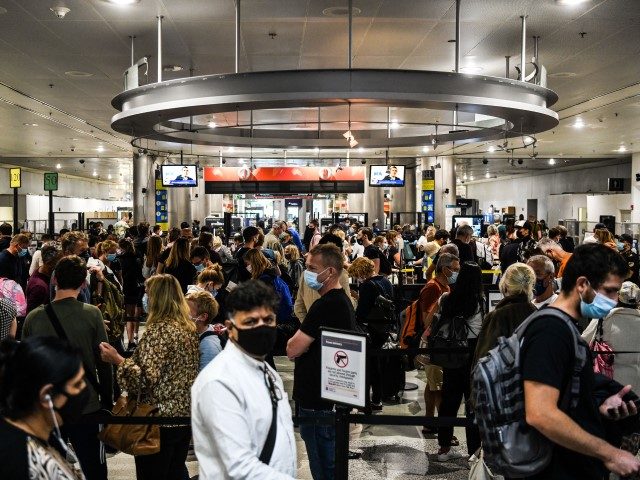The U.S. Centers for Disease Control and Prevention (CDC), Department of Homeland Security (DHS), and Customs and Border Protection (CBP) on Thursday implemented Ebola testing for travelers who have visited Uganda within the past 21 days.
Uganda is currently battling an Ebola outbreak that killed at least nine people over the past two weeks.
The U.S. Embassy in Uganda advised travelers that flights from Uganda to the United States must arrive at five selected airports — JFK, Newark, Atlanta, Chicago O’Hare, or Dulles — so they can be screened. The embassy reassured travelers that the risk of contracting Ebola is “currently low.”
The United States normally receives about 140 passengers per day who have visited Uganda recently, and more than half of them already pass through those five airports.

A medical attendant disinfects the rubber boots of a medical officer before leaving the Ebola isolation section of Mubende Regional Referral Hospital, in Mubende, Uganda Thursday, September 29, 2022. (AP Photo/Hajarah Nalwadda)
Similar steps were taken in March 2021, when travelers from the Democratic Republic of Congo and Guinea were routed through six U.S. airports for Ebola screening.
The Ugandan Ebola outbreak is troubling to international health officials because it managed to spread for three weeks before the first case was formally noted on September 20. It also seems to be spreading with unusual speed, although the total number of cases remains low. Ebola can remain undetected inside a human carrier for long periods of time and can be spread by animals.

Permanent Secretary of the Ministry of Health Diana Atwine confirms a case of Ebola in the country, at a press conference in Kampala, Uganda, Tuesday, Sept. 20, 2022. (AP Photo/Hajarah Nalwadda)
As of Thursday, there have been 43 confirmed cases and nine fatalities from the outbreak, most of them in Uganda’s central administrative and commercial hub of Mubende. Six of the infections, and four of the fatalities, occurred among healthcare workers. To date, no infections have been reported outside of Uganda.

People queue in the departure hall of Terminal 7 at JFK airport in New York City. (JOHANNES EISELE/AFP via Getty Images)
Uganda’s health ministry believes at least 18 other people may have died from Ebola before the outbreak was declared but the bodies were buried before they could be tested.
Uganda is suffering from the relatively uncommon Sudan strain of Ebola, for which there is currently no approved vaccine. Six possible vaccines are under development, with the most promising candidate developed by the U.S. National Institute of Allergy and Infectious Diseases (NIAID) in Bethesda, Maryland. NIAID is reportedly considering a small shipment of its vaccine to Uganda within the next week for emergency use.
The outbreak is already the largest faced by Uganda in over 20 years and World Health Organization (W.H.O.) emergency operations manager Dr. Fiona Braka warned on Thursday that “we still haven’t reached the peak.”
Braka noted that contact tracing has been completed for only about three-quarters of the people exposed to Ebola, since it was circulating for some days before the outbreak was officially declared, so people carrying the highly infectious disease might have moved outside the controlled area in Uganda.

COMMENTS
Please let us know if you're having issues with commenting.